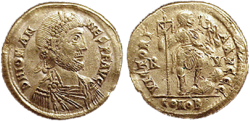423
Portal Geschichte | Portal Biografien | Aktuelle Ereignisse | Jahreskalender | Tagesartikel
◄ | 4. Jahrhundert | 5. Jahrhundert | 6. Jahrhundert | ►
◄ | 390er | 400er | 410er | 420er | 430er | 440er | 450er | ►
◄◄ | ◄ | 419 | 420 | 421 | 422 | 423 | 424 | 425 | 426 | 427 | ► | ►►
Staatsoberhäupter · Nekrolog
| ||||||||||||||||||||||||||||||||||||||||||||||||||||||||||||||||||||||||||||||||||||||||||||||||||||||||||||||||||||||||||||||||||||||||||||||||||||||||||||||||||||||||||||||||||||||||||||||||||||||||||||||||||||||||||||||||||||||||||||||||||||||||||||||||||||||||||||||||||||||||||||||||||||||||||||||||||||||||||||||||||||||||||||||||||||||||||||||||||||||||||||||||||||||||||||||||||||||||||||||||||||||||||||||||||||||||||||||||||||||||||||||||||||||||||||||||||||||||||||||||||||||||||||||||||||||||||||||||||||||||||||||||||||||||||||||||||||||||||||||||||||||||||||||||||||||||||||||||||||||||||||||||||||||||||||||||||||||||||||||||||||||||||||||||||||||||||||||||||||||||||||||||||||||||||||||||||||
| 423 | |
|---|---|
(c) Classical Numismatic Group, Inc. http://www.cngcoins.com, CC BY-SA 3.0 | |
| 423 in anderen Kalendern | |
| Äthiopischer Kalender | 415/416 |
| Buddhistische Zeitrechnung | 966/967 (südlicher Buddhismus); 965/966 (Alternativberechnung nach Buddhas Parinirvana) |
| Chinesischer Kalender | 51. (52.) Zyklus Jahr des Wasser-Schweins 癸亥 (am Beginn des Jahres Wasser-Hund 壬戌) |
| Jüdischer Kalender | 4183/84 (21./22. September) |
| Koptischer Kalender | 139/140 |
| Römischer Kalender | ab urbe condita MCLXXVI (1176) Ära Diokletians: 139/140 (Jahreswechsel November) |
| Seleukidische Ära | Babylon: 733/734 (Jahreswechsel April) Syrien: 734/735 (Jahreswechsel Oktober) |
| Spanische Ära | 461 |
| Vikram Sambat (Nepalesischer Kalender) | 479/480 (Jahreswechsel April) |
Ereignisse
Politik und Weltgeschehen
- 20. November: Nach dem Tode des Kaisers Honorius wenige Monate zuvor nutzt Johannes die Chance, sich selbst zum weströmischen Kaiser zu erklären. Der oströmische Kaiser Theodosius II. erkennt ihn nicht an und stellt ein Heer unter Aspar gegen ihn auf.
- Galla Placidia flieht vor Kaiser Johannes aus Rom nach Konstantinopel, wo sie um Unterstützung für die Einsetzung ihres vierjährigen Sohnes Valentinian III. als weströmischer Kaiser wirbt.
Religion
- Der Nestorianer Theodoret wird Bischof von Kyrrhos.
Gestorben
Weblinks
Auf dieser Seite verwendete Medien
(c) OOjs UI Team and other contributors, MIT
An icon from the OOjs UI MediaWiki lib.
(c) Classical Numismatic Group, Inc. http://www.cngcoins.com, CC BY-SA 3.0
Joannes. 423-425 AD. AV Solidus (4.36 gm). Ravenna mint.
- D N IOHANNES PF AVG, rosette-diademed bust right
- VICTORIA AVGGG, Emperor standing right, holding Victory, Labarum, foot on captive, R-V, CONOB.
RIC X 1901 (R2); Depeyrot 12/1.
- Little is known of the origin and early career of Johannes (John), but at the time of the death of the western Emperor Honorius (August 15, 423 AD) he occupied a position of great influence as head of the palace bureaucracy in Ravenna. An ‘interregum’ of several months followed Honorius' death during which the eastern Emperor Theodosius II (402-450) was technically the ruler of the entire Empire. On 20 November the situation was dramatically changed by the proclamation of Johannes in Ravenna as emperor of the West. Theodosius refused to countenance this usurpation and decided to support the claim to the western throne of his young cousin, Valentinian, son of the late Emperor Constantius III and the Empress Galla Placidia. Towards the end of 424 a large army was despatched from the East with orders to remove Johannes from power and to install Valentinian III as emperor of the West. After various setbacks this task was accomplished and the unfortunate Johannes was taken prisoner in Ravenna and sent to Aquileia for execution. his reign had lasted little more than a year and a half.
- The rare coinage of Johannes was issued mostly from his capital of Ravenna where at least five denominations were produced. This attractive solidus is of the usual ‘western’ design, with a profile bust of the emperor on obverse and his standing figure spurning a barbarian captive on reverse. The portrait depicts the emperor bearded, an unusual feature at this time and one which was sometimes associated with pagan sympathies.

